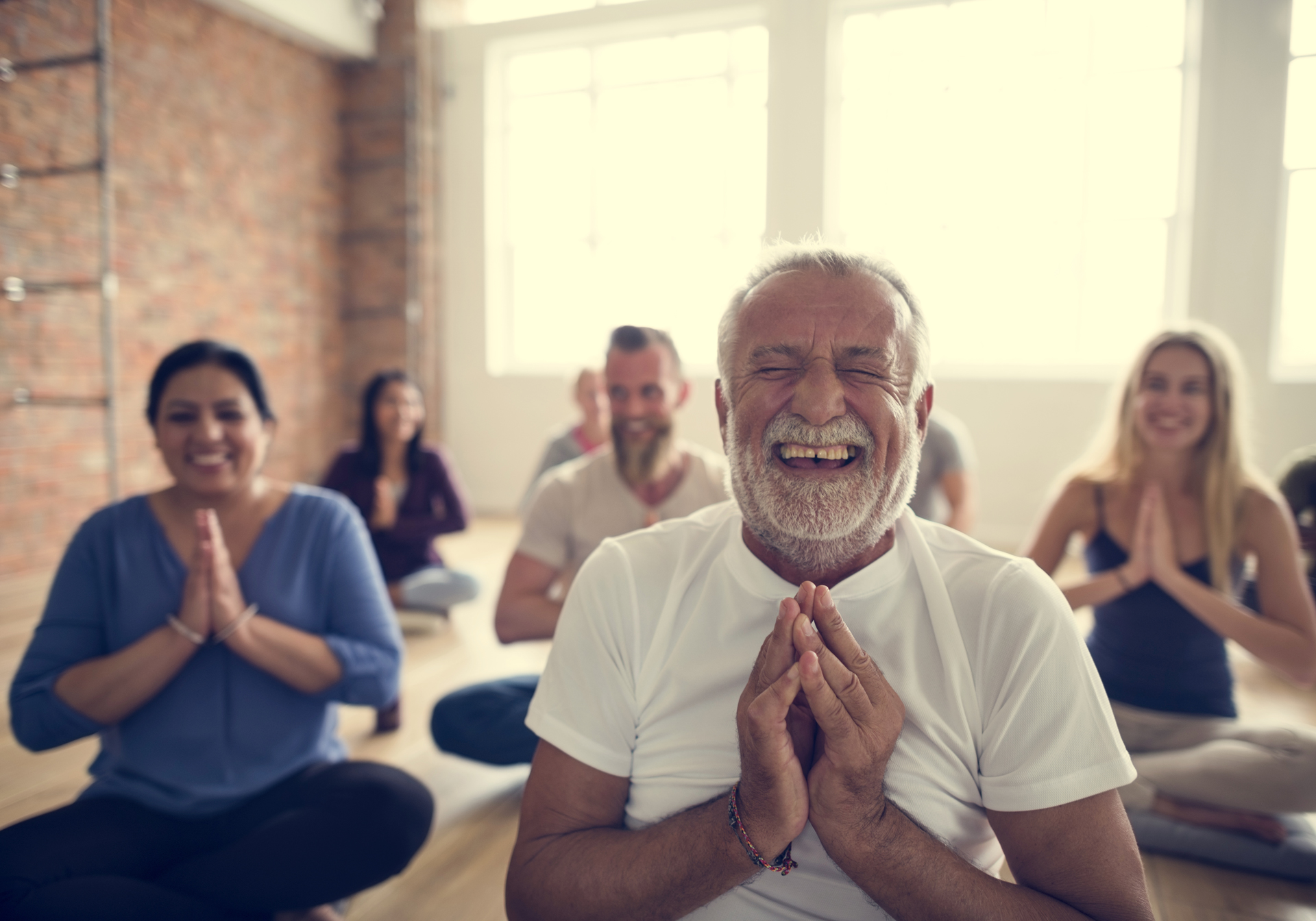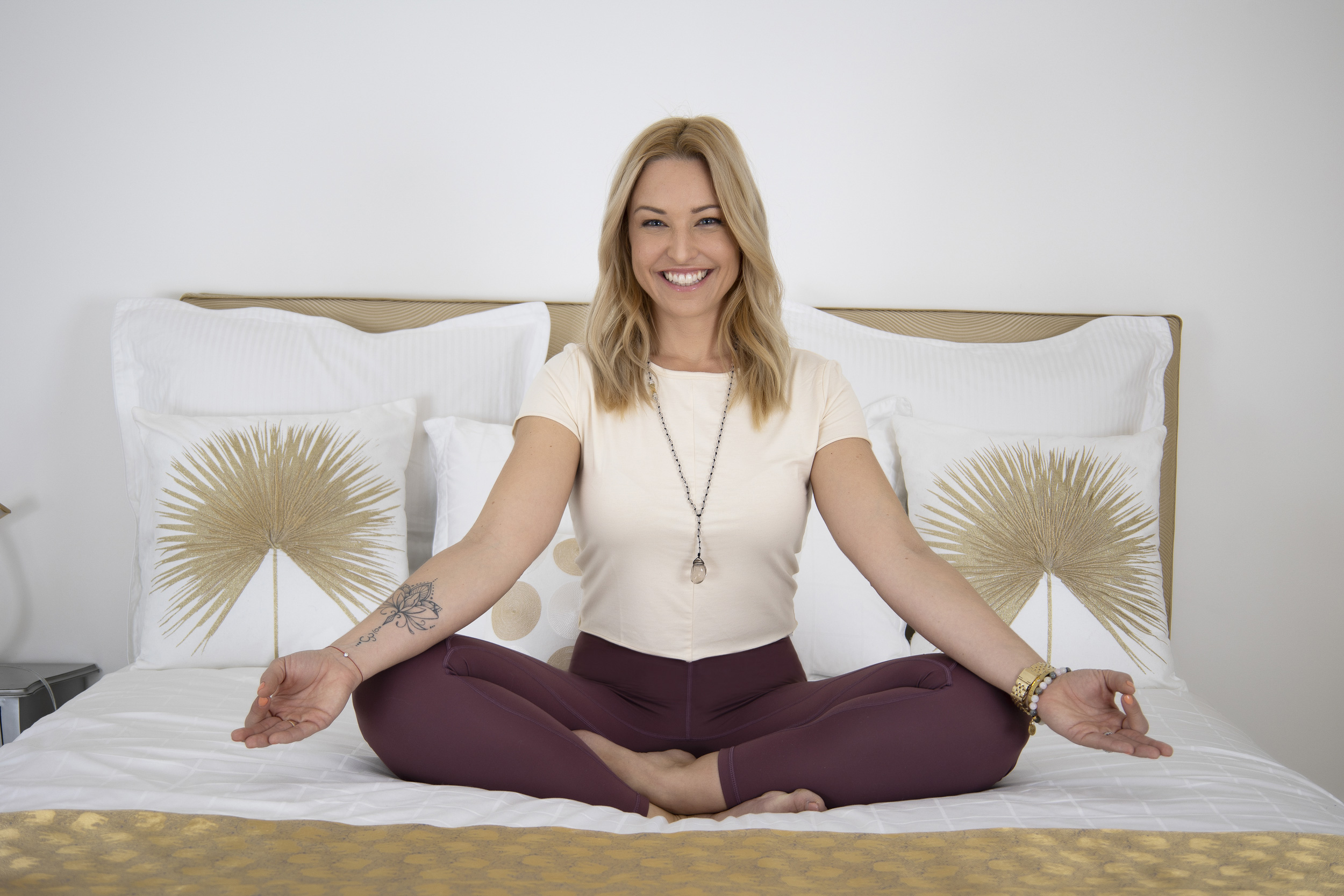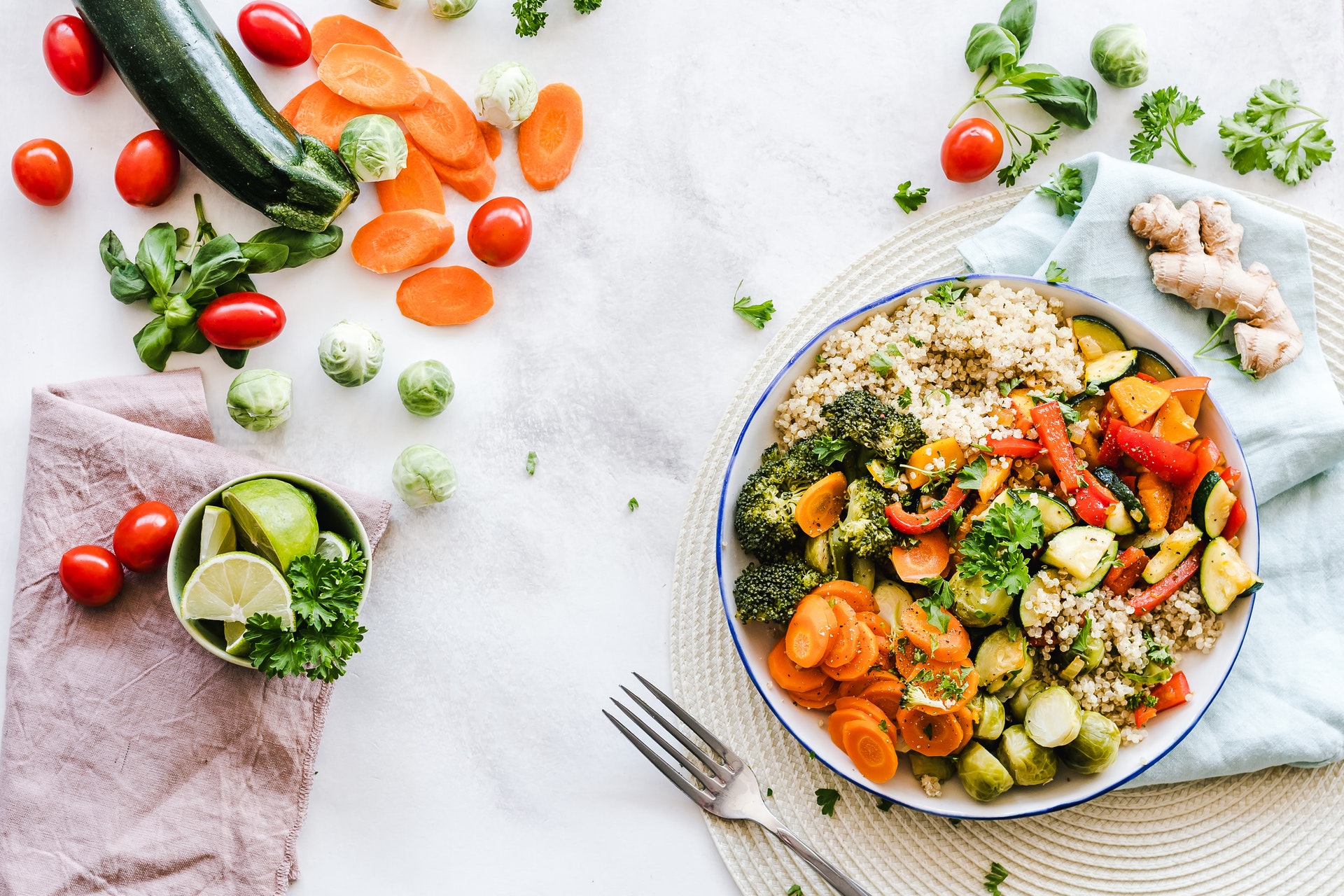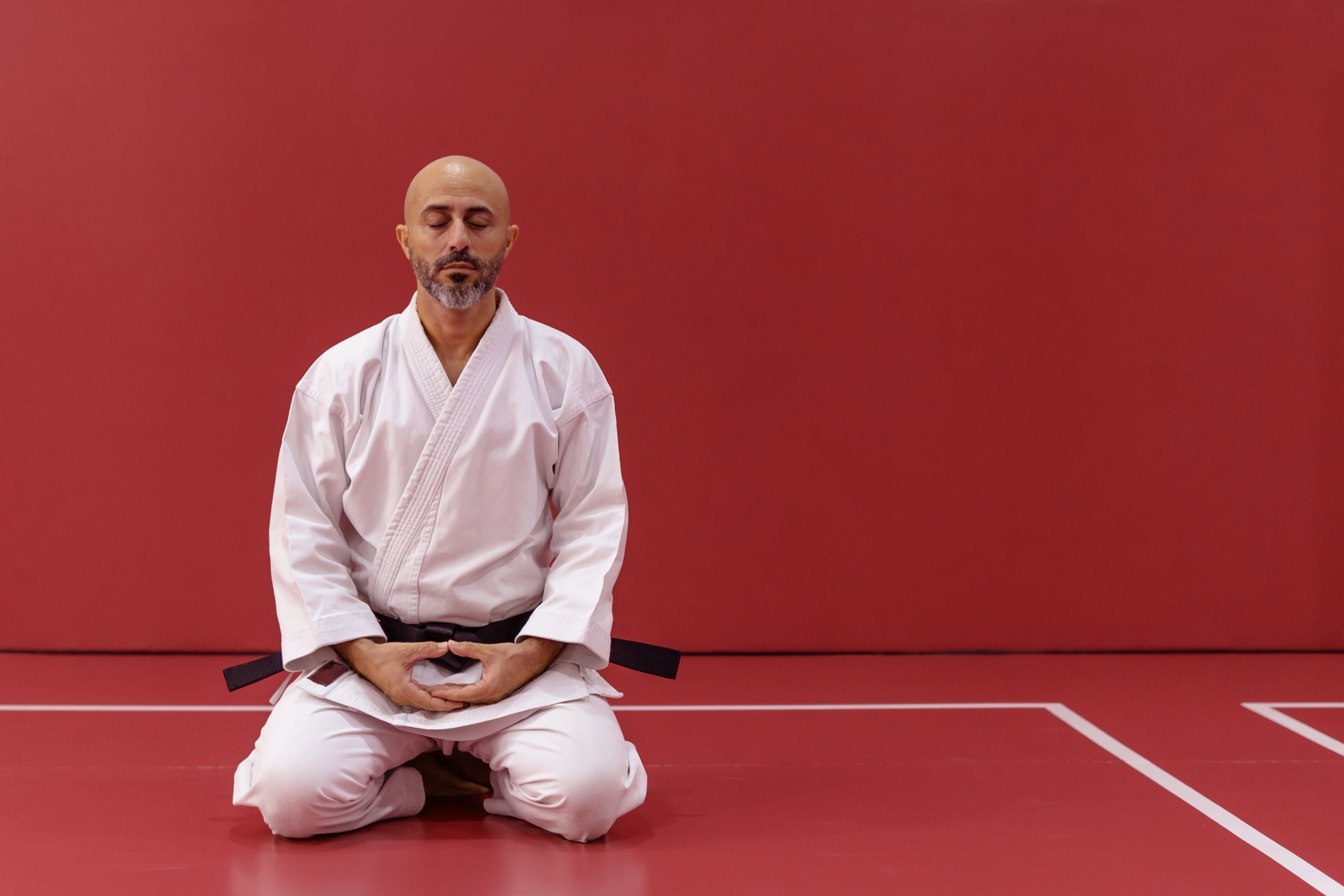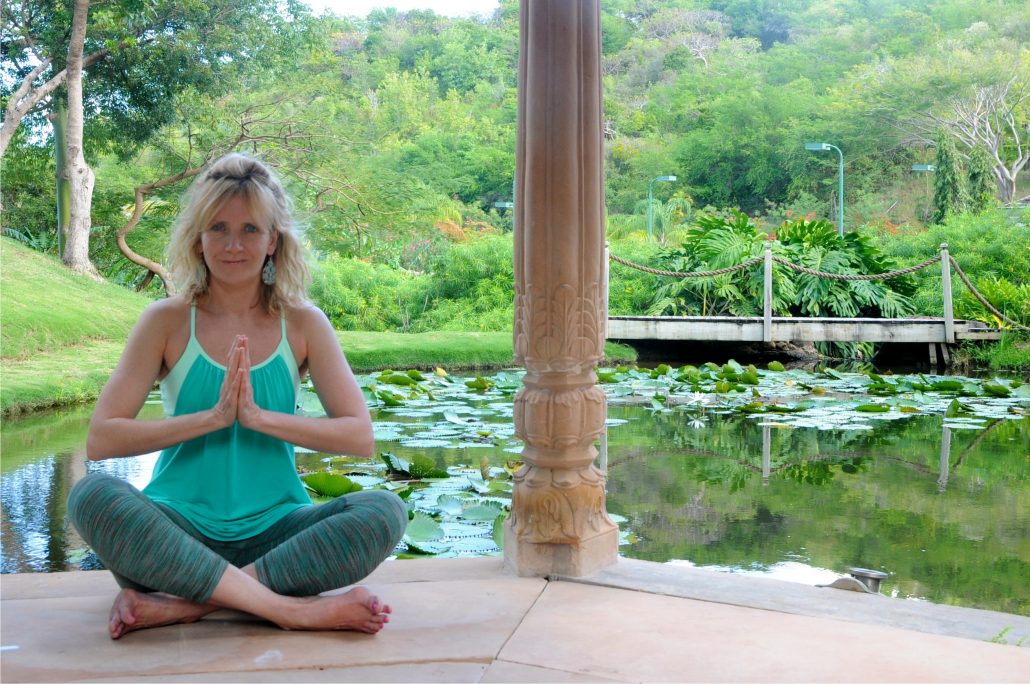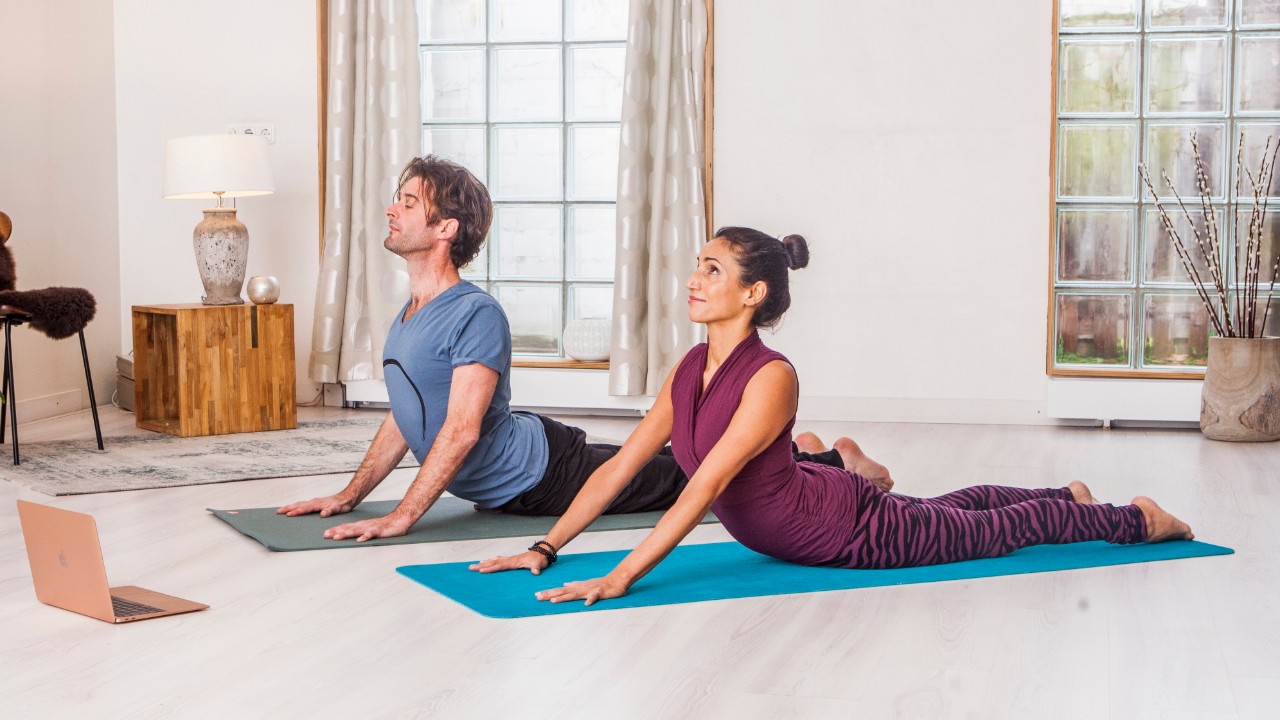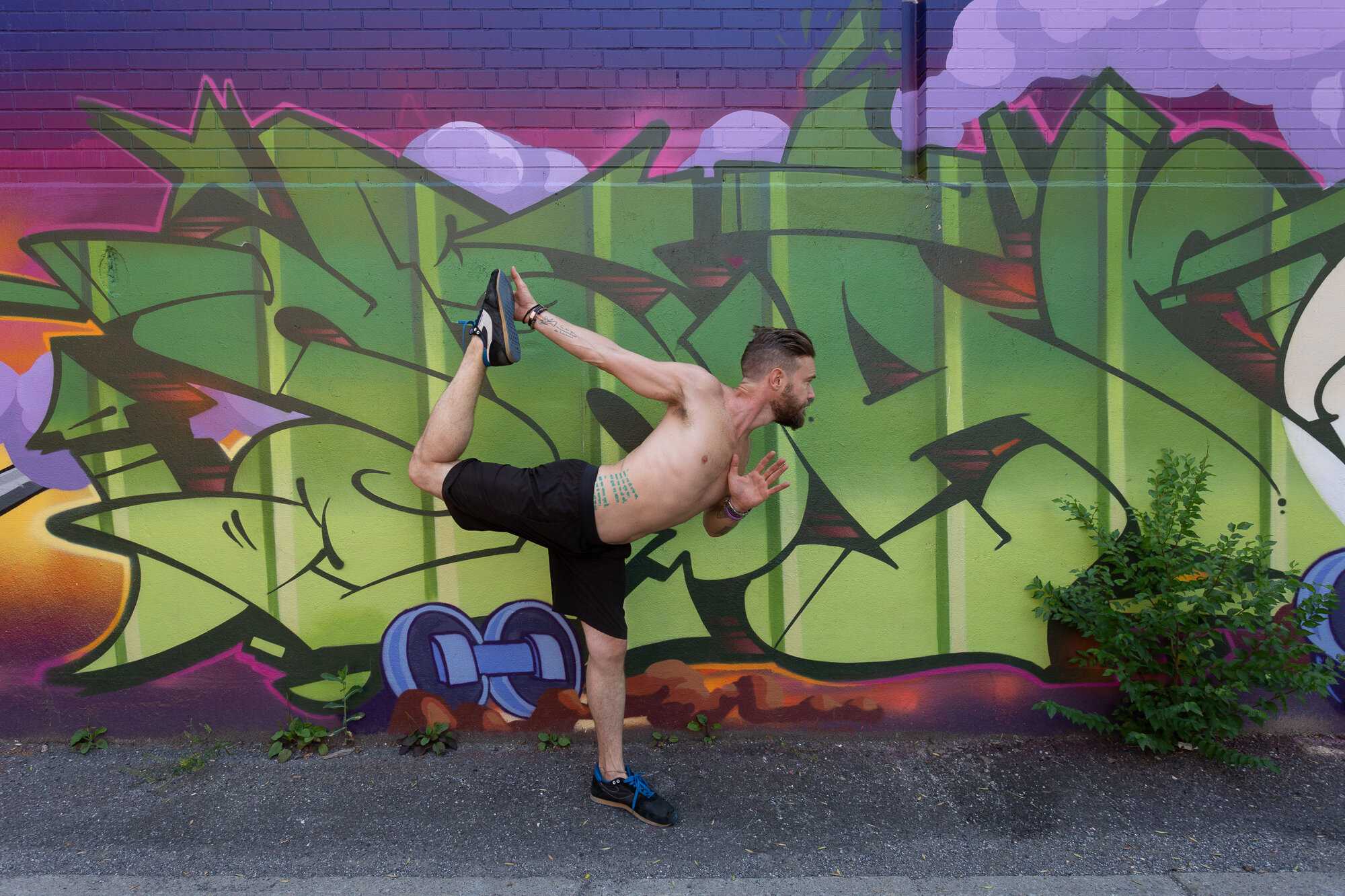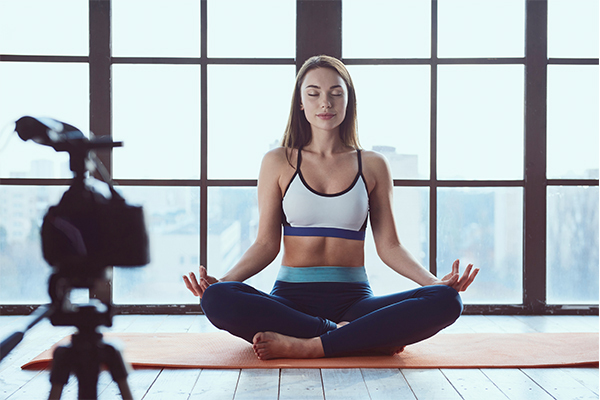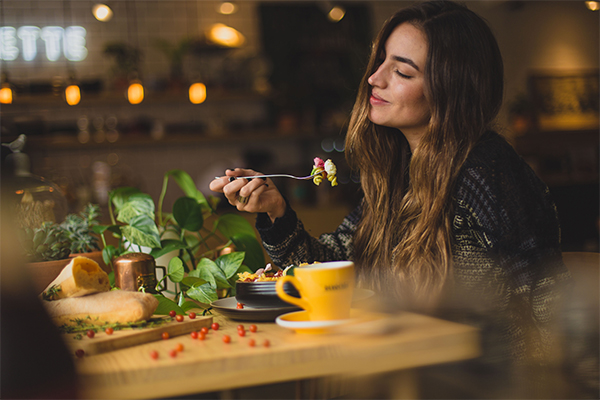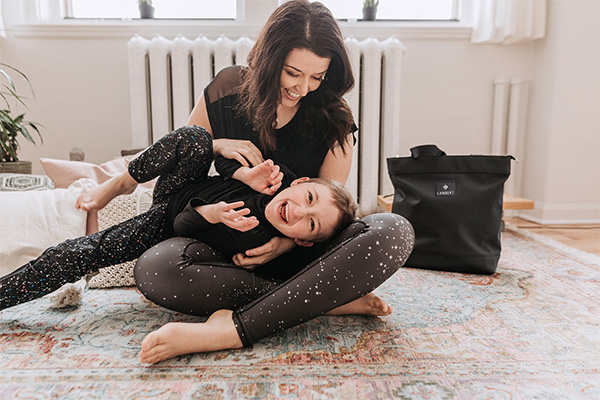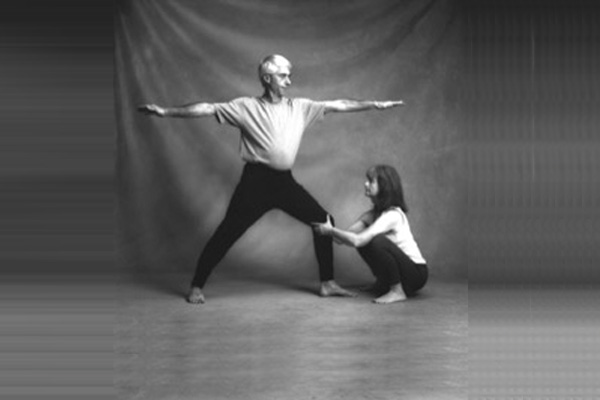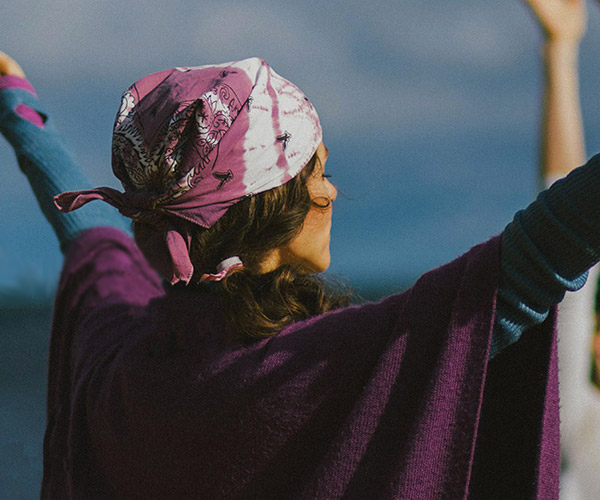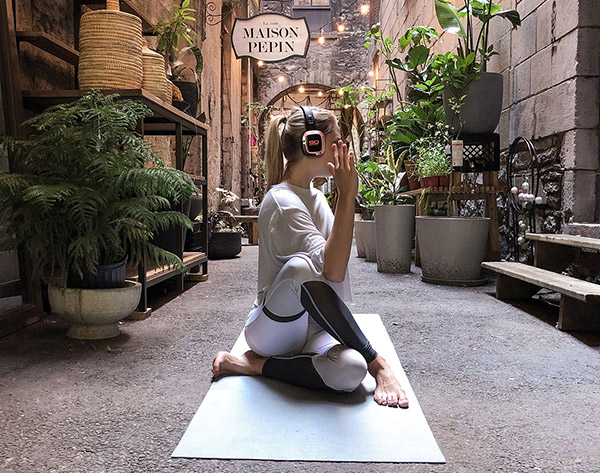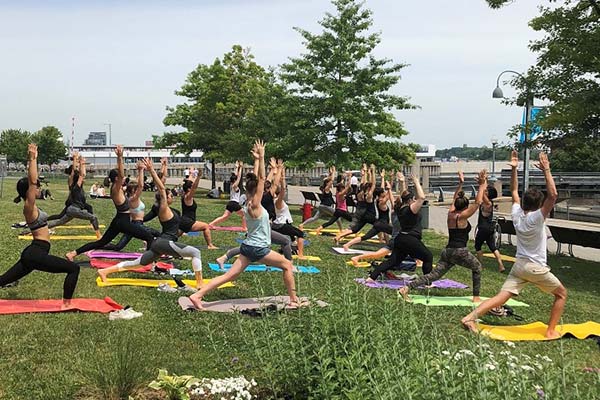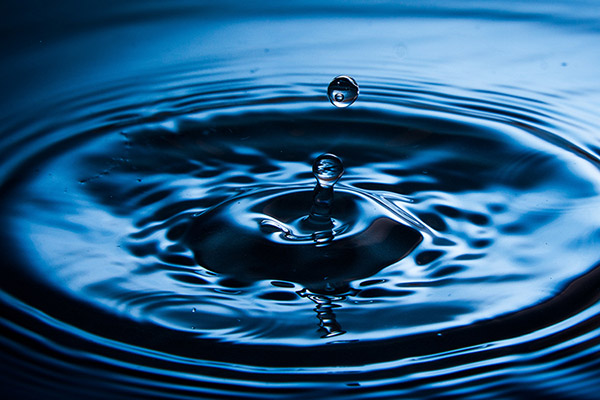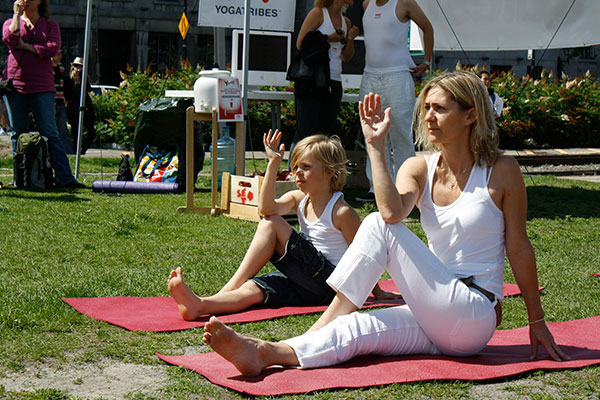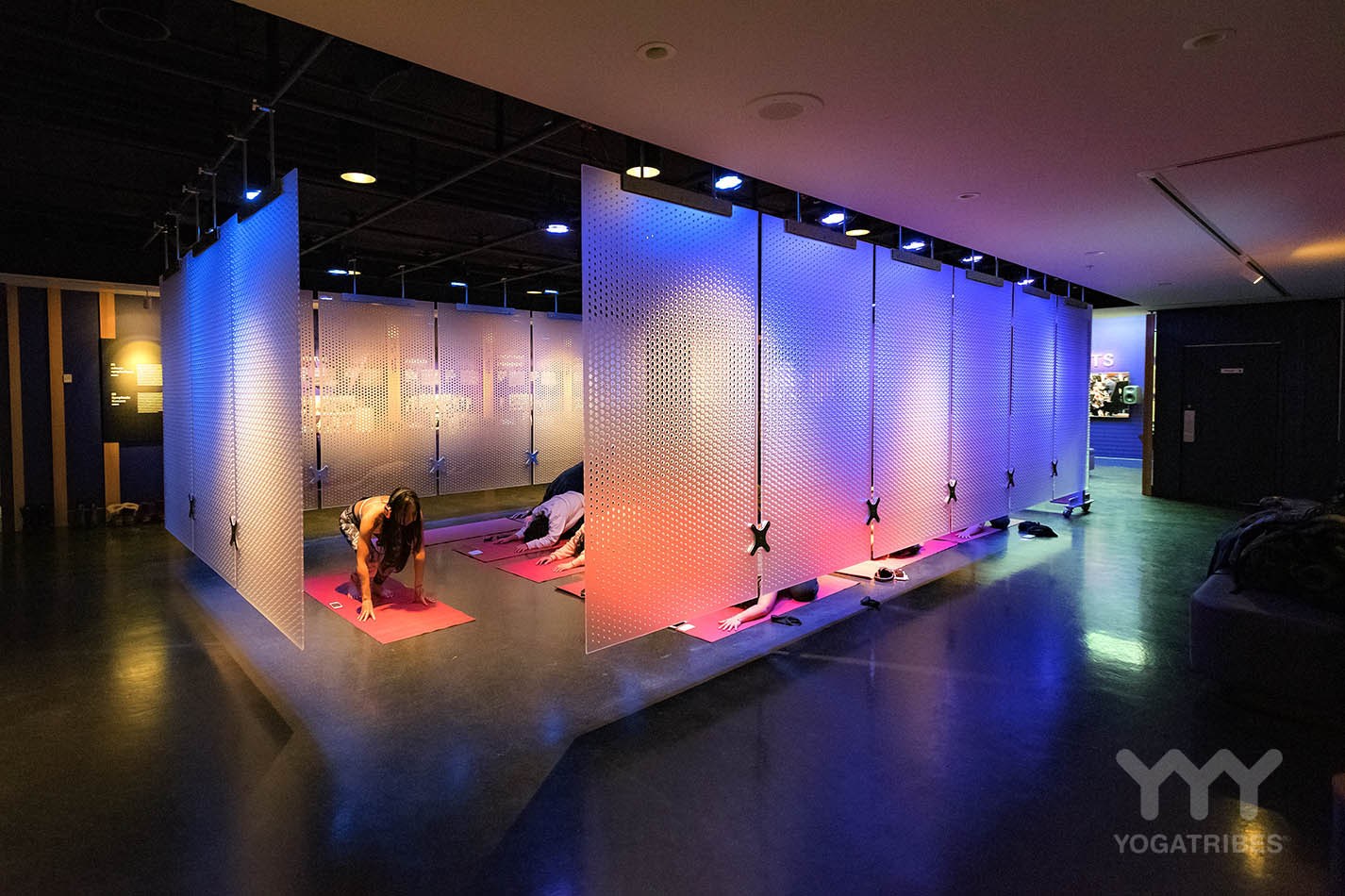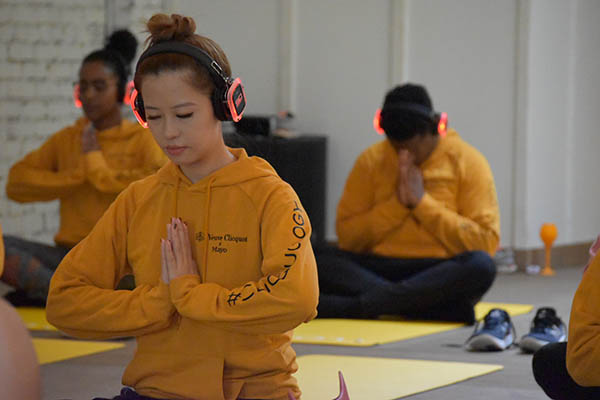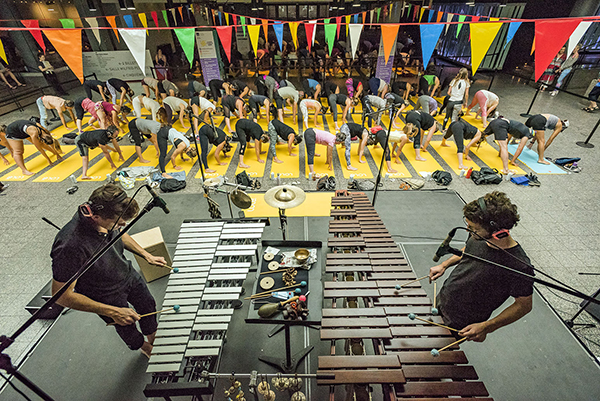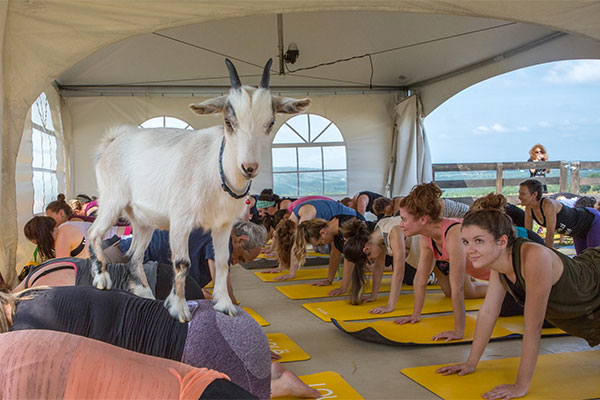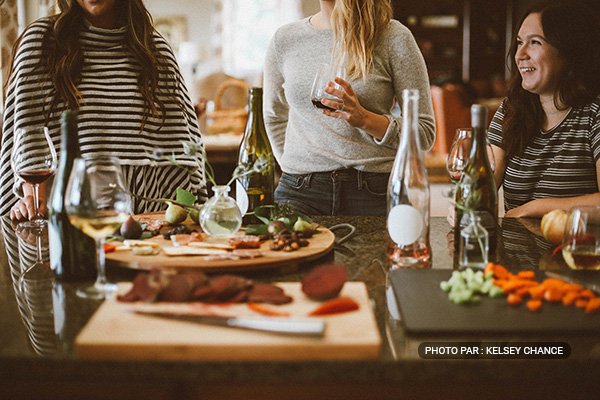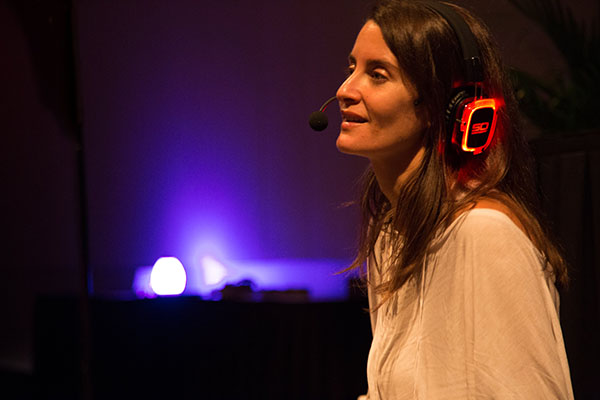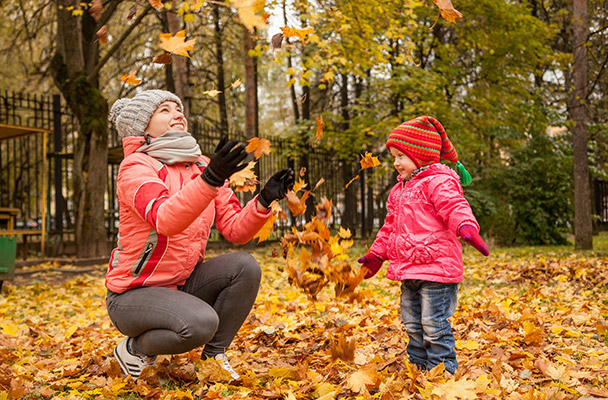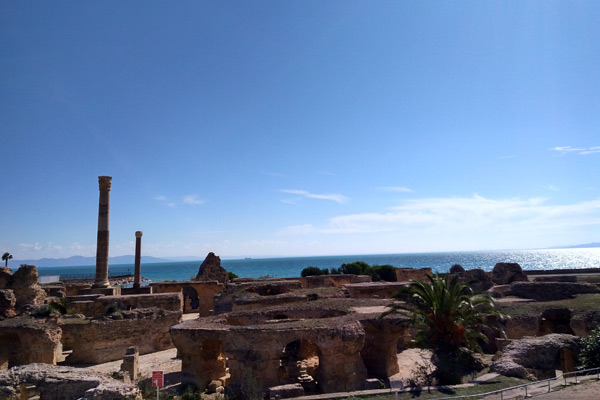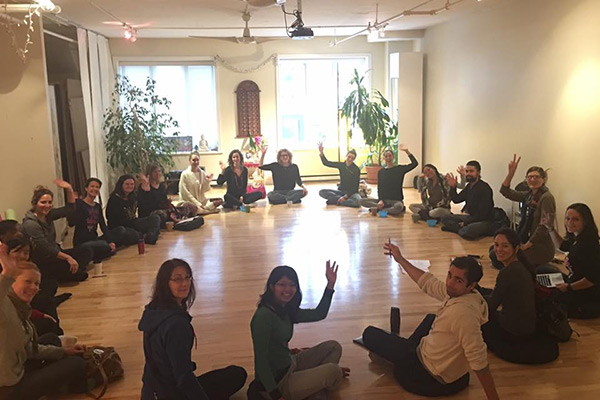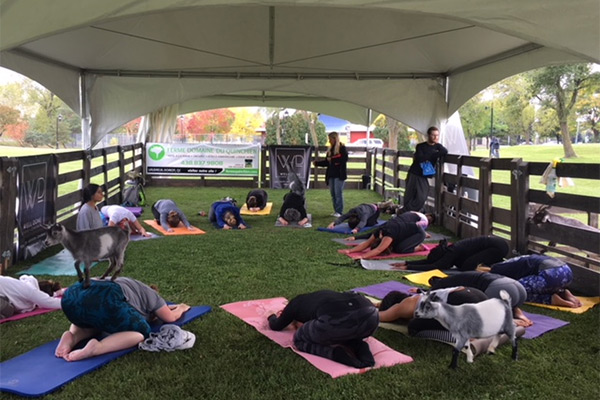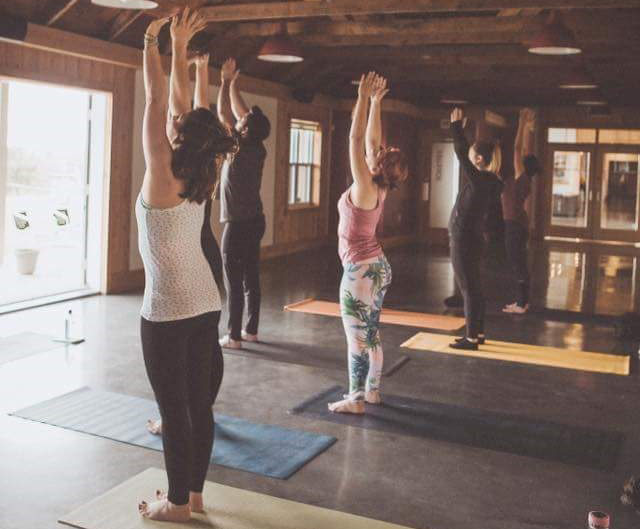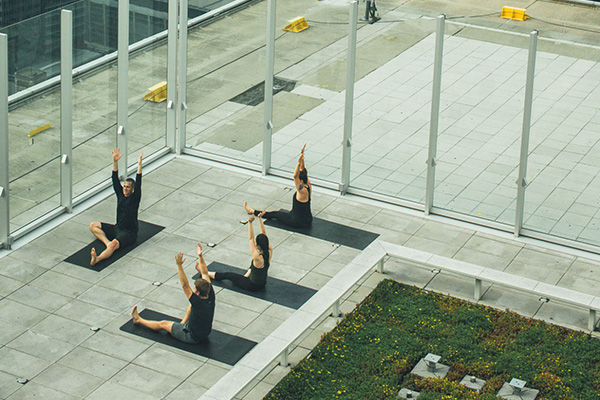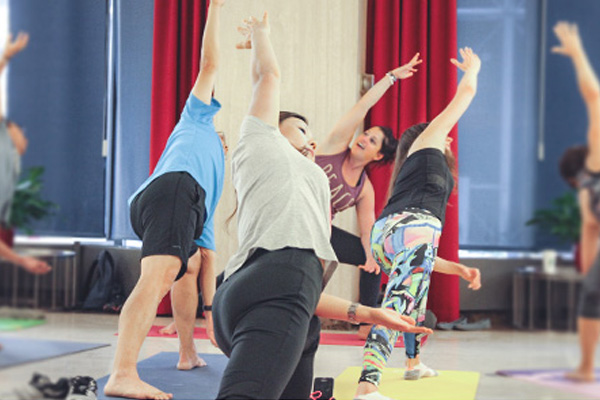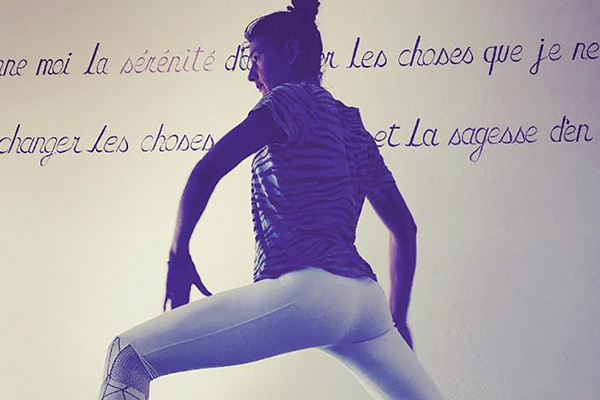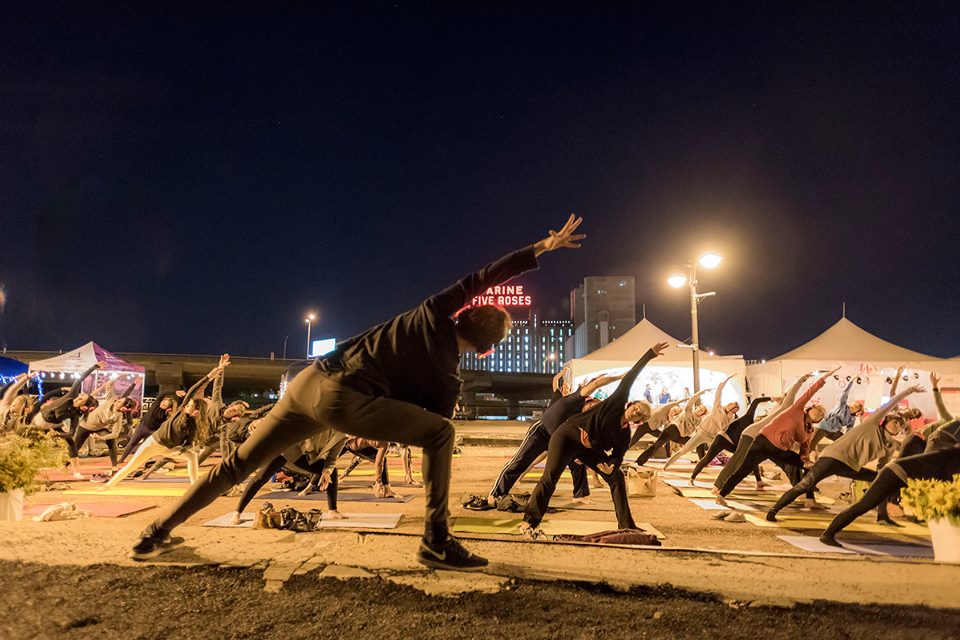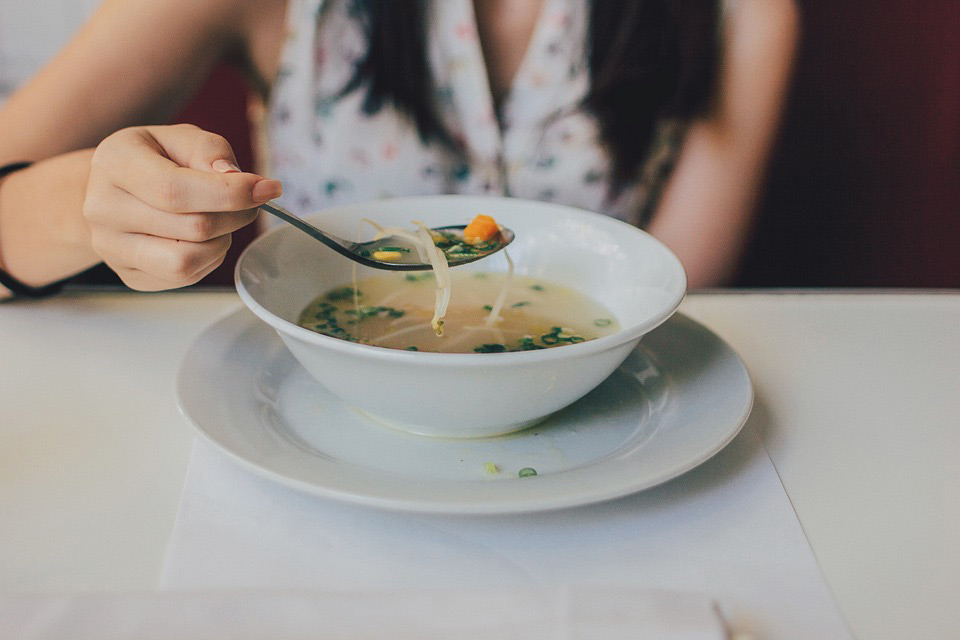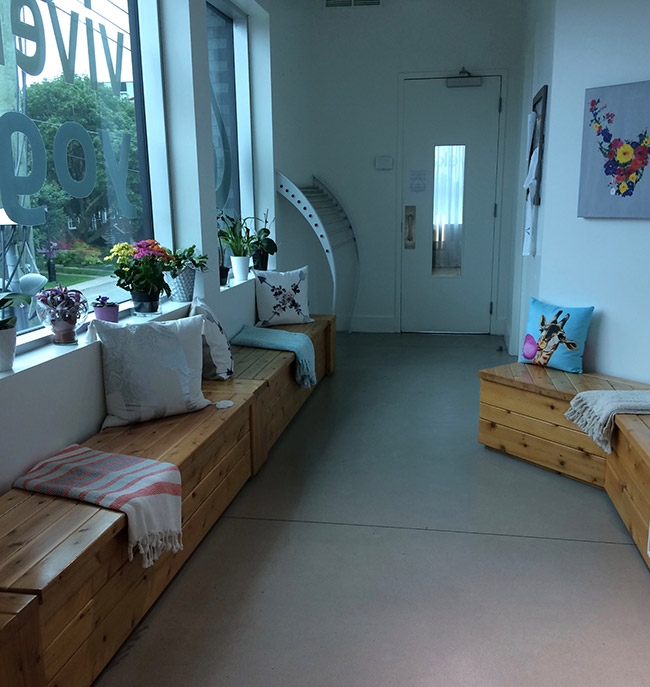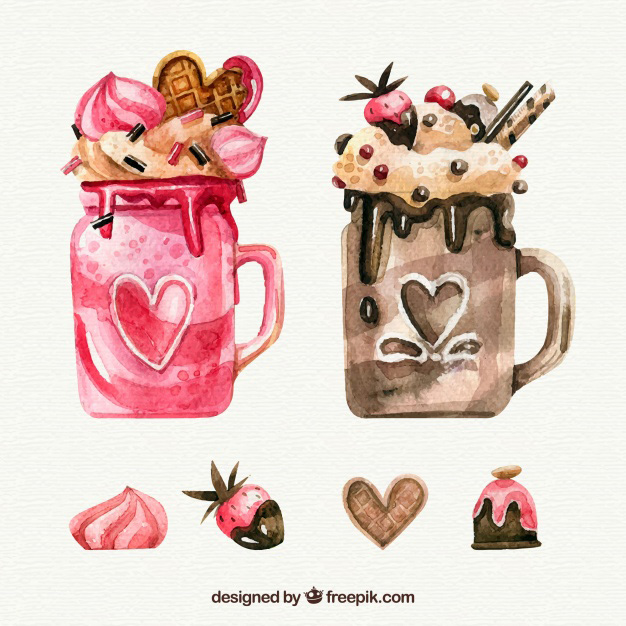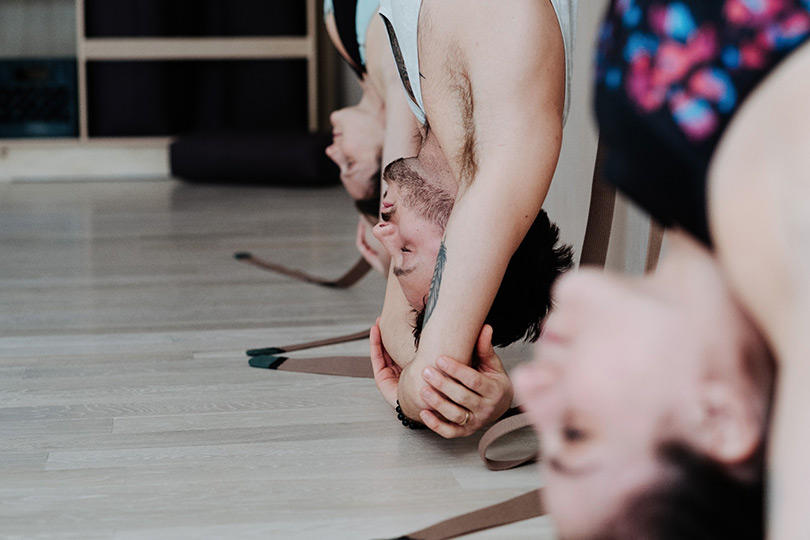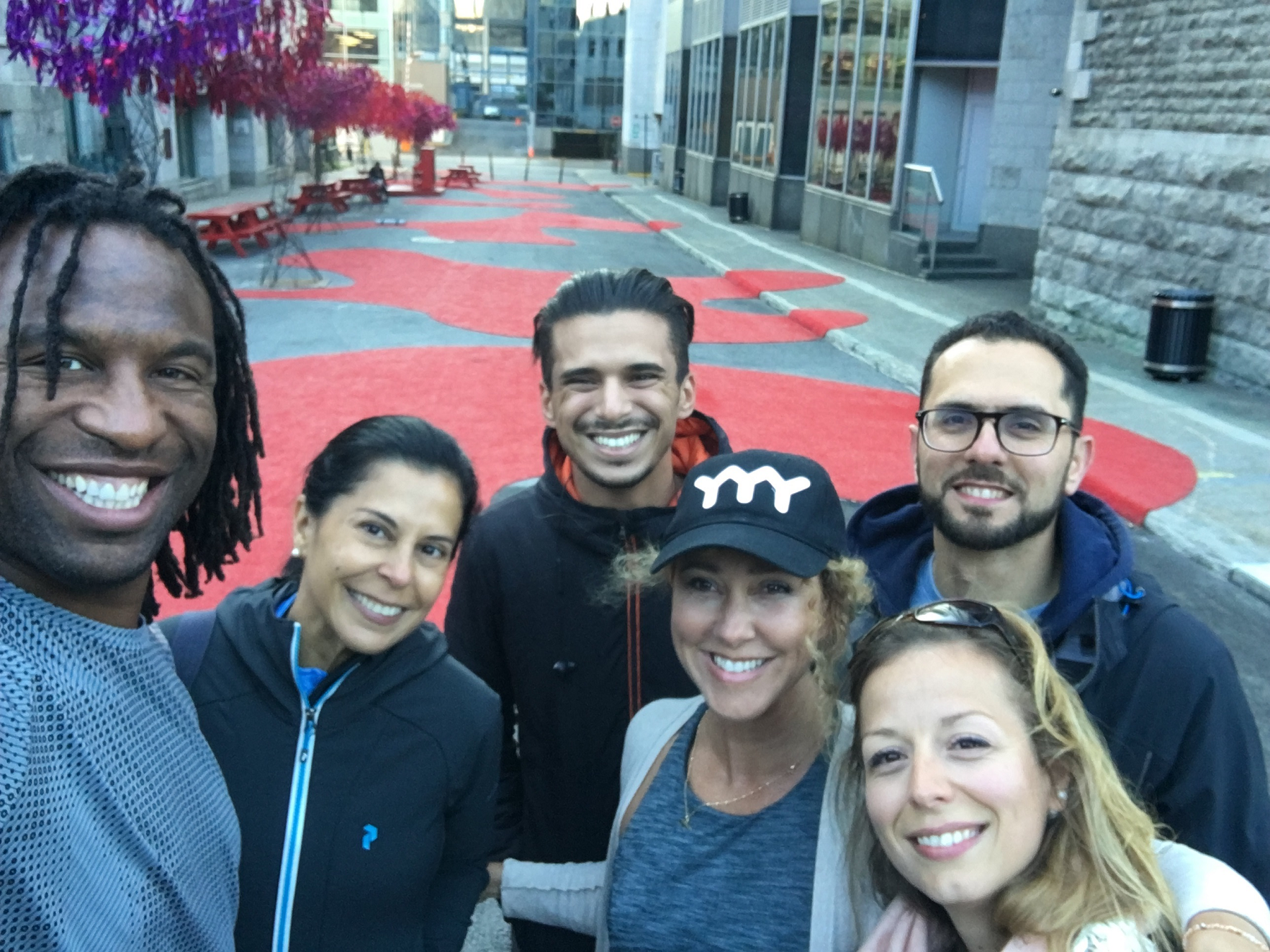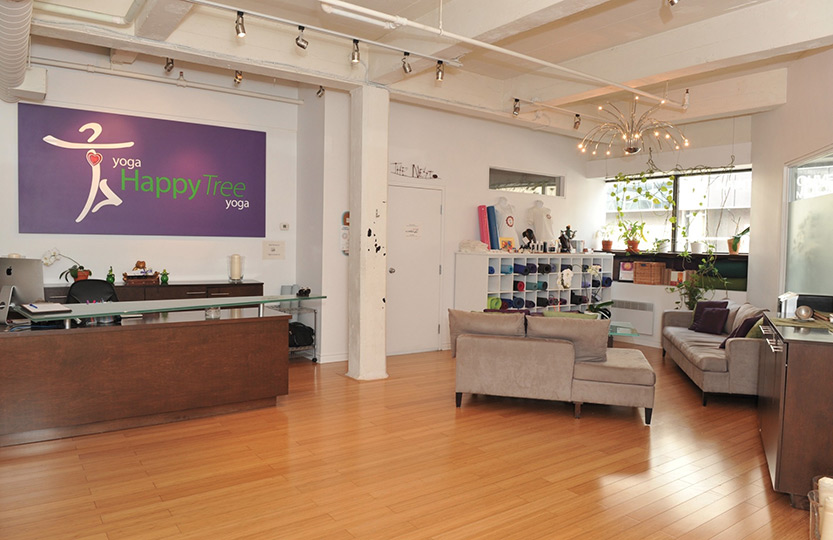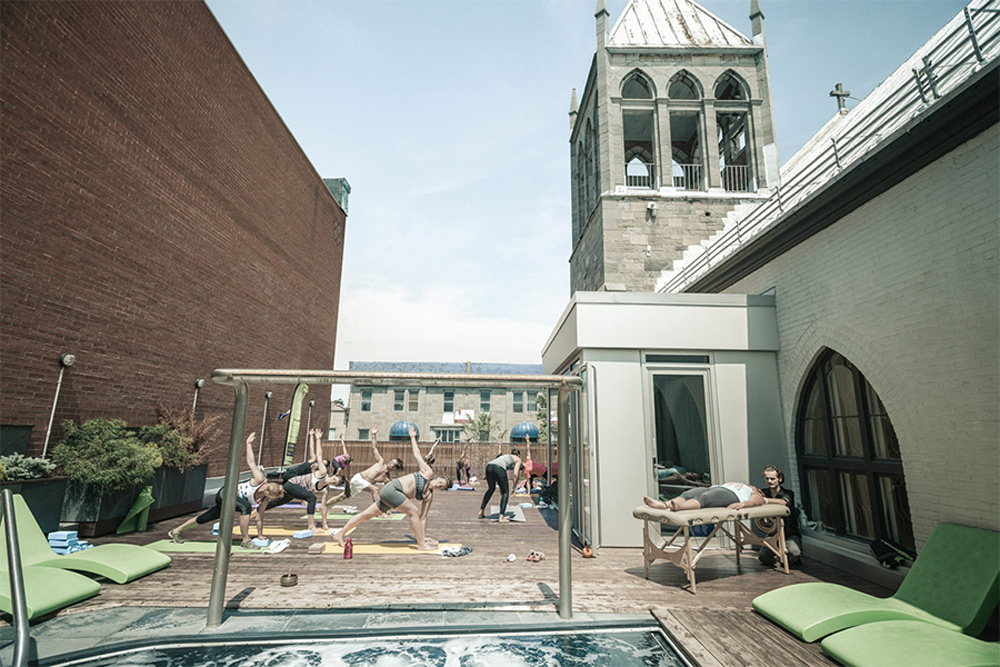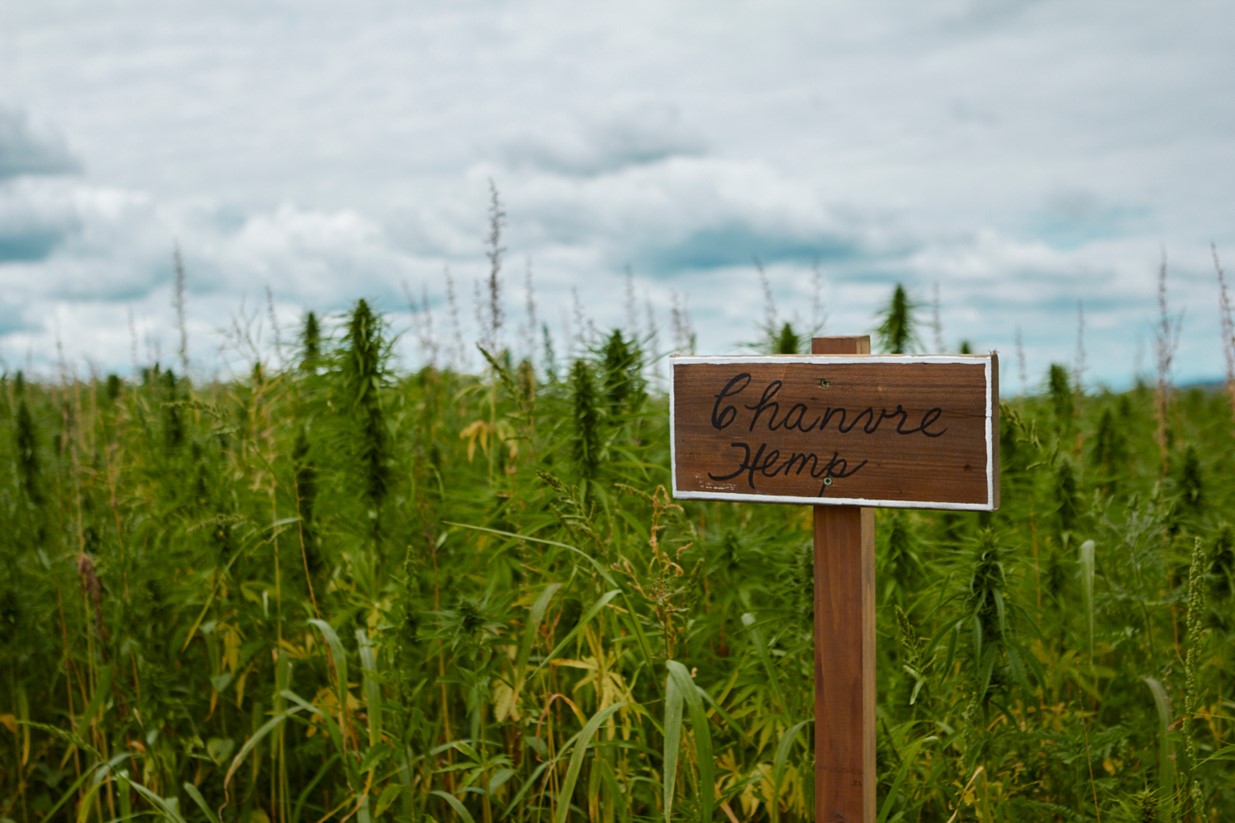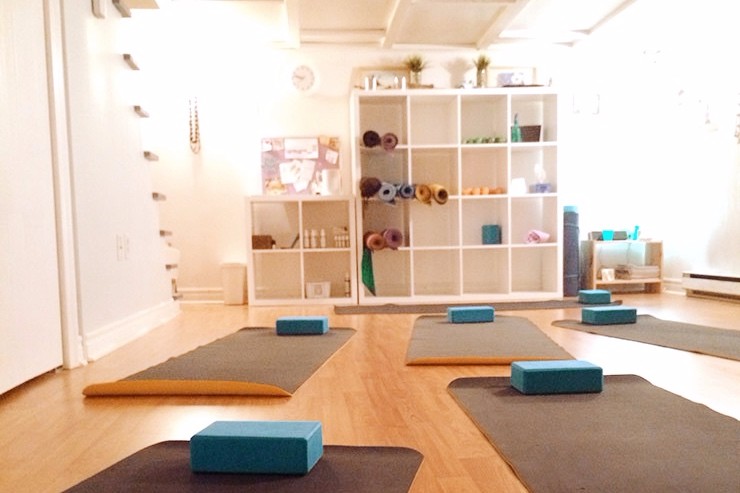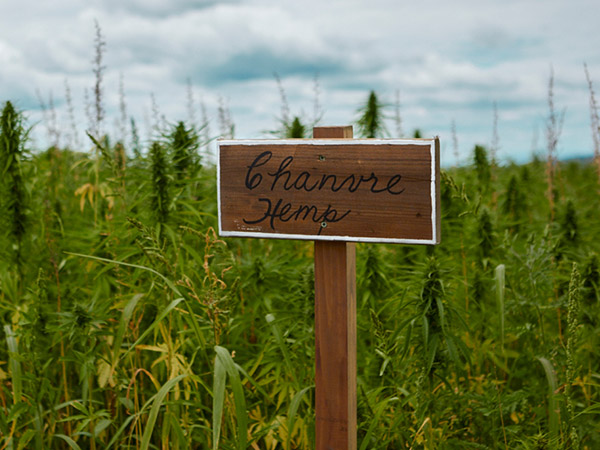
By Hannah Brockow, aromatherapist, yoga teacher and harp therapy practitioner
What do yoga and aromatherapy have in common?
Both healing arts connect you intimately to your breath and help you to come into a greater state of balance.
Yoga’s sister science, Ayurveda, is full of aromatic plant medicine. Its pharmacopeia includes many plants that are distilled into essential oils today, such as tulsi, coriander, fennel and mint (herbs); vetiver, valerian and spikenard (aromatic roots); and sandalwood, cedar, pine and eucalyptus (trees). Aromatic flowers such as rose, jasmine and champa are used in Ayurveda as well, not to mention all the spices used in Ayurvedic cuisine including cinnamon, cardamom, black pepper, ginger, nutmeg and clove.
Aromatherapy as we know it today is a much newer approach based on extracting volatile oils from plants through distillation. These oils are called essential because they capture the scent and flavour of the plant — its essence. The term aromatherapy dates back to the early 1900s in France, when a perfumer named René-Maurice Gatefossé burned his hand in his laboratory and plunged it into a container of lavender essential oil. He was amazed at how quickly his burn healed, with very little scarring. He became fascinated with the healing properties of essential oils and began experimenting with them during the First World War on soldiers in military hospitals.
Today, many people combine aromatherapy with another healing art. Some examples are massage, sound healing, energy techniques such as Reiki, and traditional Chinese medicine (“Aromatherapy for Healing the Spirit” by Gabriel Mojay is a wonderful book about essential oils and the Five Elements). Yoga and aromatherapy are a natural fit!
Try sitting with a bottle of oil as you center yourself before practice. Open the oil and take several slow, deep breaths as you inhale from the open bottle. Set an intention inspired by the oil’s properties (for example, grounding with cedarwood or uplifting with grapefruit). After practice, return to a seated position and take a few breaths with your chosen oil again.
Diffusers are a popular way to use essential oils. As with incense, it’s probably best to use diffusers before you practice rather than leaving them running while you practice, so you can reduce sensory distraction and take your focus within. Many people these days use water diffusers. The most efficient way to use these is to add 100 mL of water and 10-15 drops of your essential oil or blend. Refilling the water and oil to this ratio rather than adding a large amount of water and oil all at once will give you the freshest experience of your aroma.
The primary effect of water diffusers is on the emotions; they are not the best option for odour control, although they are often used for this purpose. That being said, if you want a diffuser blend that is uplifting and is somewhat more effective for odour control, lemon, peppermint and eucalyptus globulus (3-4 drops of each in 100 mL of water) is a good choice.
This brings me to a need that yogis share — cleaning mats or freshening up the smell of a yoga practice area. Your best option for both is a homemade spray.
Water and oil don’t mix, so to create an effective spray, you will need a dispersant. A dispersant is a medium, such as oil, salt or alcohol, that can contain and disperse the essential oil molecules so that they can work more effectively. There are commercial dispersants available, but I use rubbing alcohol or vodka in my sprays. They’re easy, hassle-free and blend perfectly into water. When blending your spray, use two parts of water to one part alcohol.
As people often have mental or emotional material attached to certain scents, I tend to use blends of three to five oils more frequently than single essential oils for any product to be used by multiple people. This is called a synergy, and it creates a new, less familiar aroma while combining the properties of the oils towards a common goal. Try lavender, bergamot and cedarwood to balance Vata; lemon, mint and fennel to cool down Pitta or black spruce, rosemary ct cineole and eucalyptus radiata to stimulate Kapha.
Here’s a synergy spray that I originally created for United Yoga Montreal to use as a room freshener and mat cleaner. I always keep a bottle of it in my yoga mat bag as well as bottles in my bathroom and kitchen. Uplifting tea tree and grapefruit are combined with relaxing, soothing lemon and lavender, with a refreshing touch of peppermint. All of these oils have antibacterial properties (bacteria being the main cause of unpleasant odours) and they’re also very effective at clearing your space and raising your energy.
Mat Spray/Space Freshener
For 250 mL of liquid (75 mL of alcohol and 175 mL of water), you’ll need a synergy composed of 75 drops of essential oil. This recipe is a 1% dilution, so you can even apply it to the skin as a hand sanitizer. Just don’t apply to the skin before going into the sun, as citrus oils are photosensitive and can cause skin reactions for some people.
Create a synergy by combining the following oils in a glass container that can be sealed overnight:
- 20 drops lemon essential oil
- 20 drops grapefruit essential oil
- 20 drops true lavender essential oil
- 10 drops tea tree essential oil
- 5 drops peppermint essential oil
Combine all oils and leave overnight to synergize.
In a non-reactive spray bottle (glass or aluminum – no plastic), add:
- 75 mL isopropyl alcohol, rubbing alcohol or vodka
- Add the synergy to the alcohol. Close the container and shake well.
- Let rest for one hour.
Complete the spray by adding:
- 175 mL water
Shake well before each use.
RESOURCES
Just as we have an abundance of incredibly talented local yoga teachers in Quebec, we are blessed with many wonderful Quebec companies that are certified organic by Ecocert and even offer locally distilled oils. Check out the organic essential oils distilled from Canadian plants by Quebec companies:
- Zayat Aroma, Organic Canadian lavender
https://www.zayataroma.com/en/oils/lavande-vraie - Divine Essence’s Organic Canadian white spruce
https://divineessence.com/en/product/spruce-white/ - Aliksir, Organic Canadian St. John’s Wort
https://aliksir.com/en/st-john-s-wort-hypericum-perforatum-essential-oil.html - The Facebook group “Aromathérapie au Québec. Échanges et partages” (in French) is a wonderful place to connect with local aromatherapy professionals, find resources such as new local distillers and ask questions.
https://www.facebook.com/groups/AromatherapieauQuebec/
 Hannah Brockow
Hannah Brockow
Meet Hannah Brockow, aromatherapist, yoga teacher and harp therapy practitioner by visiting her profile here.






